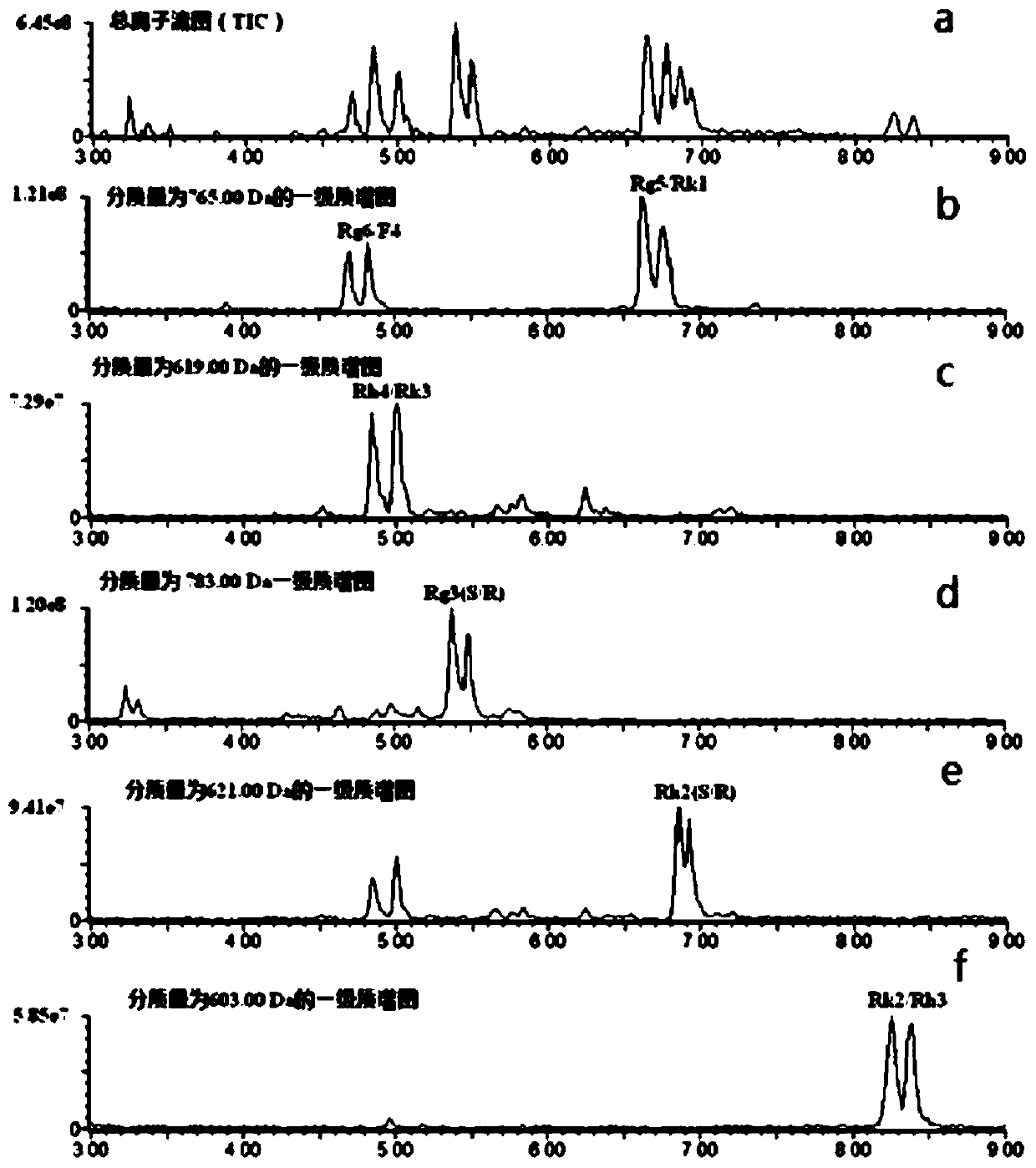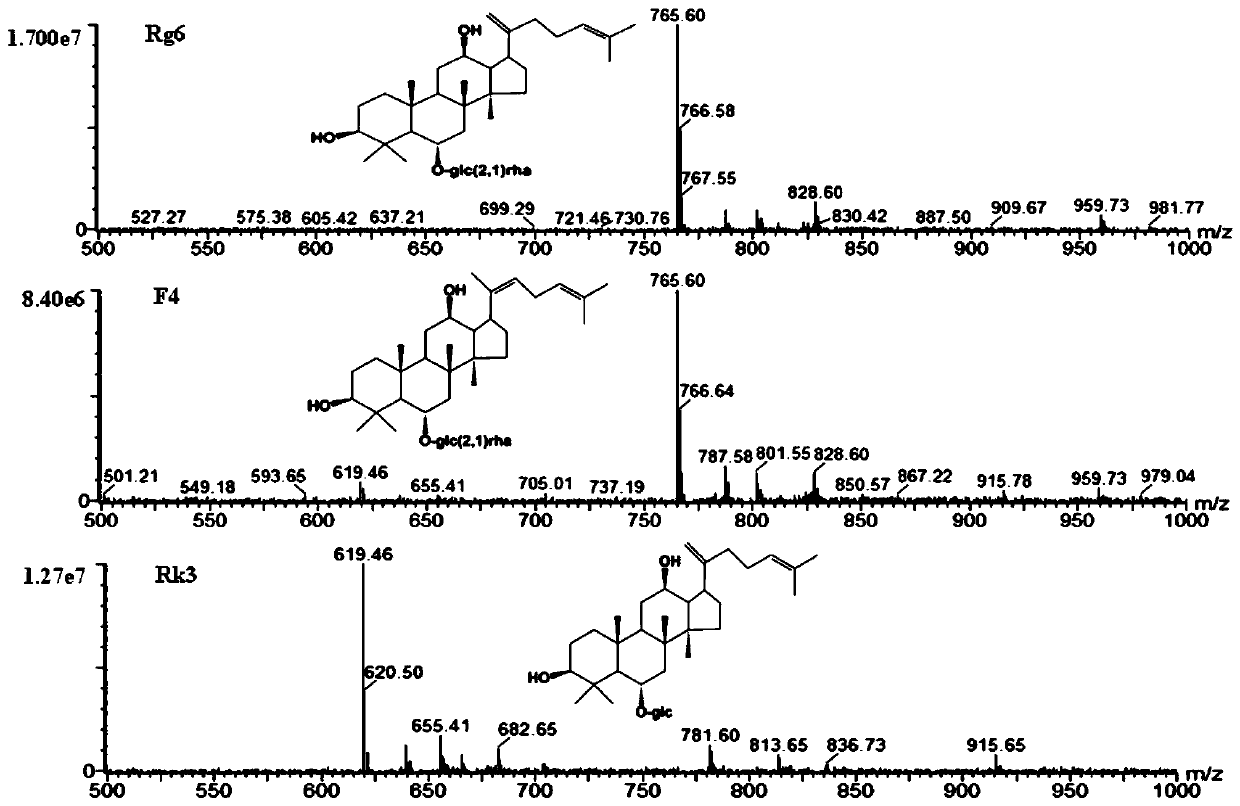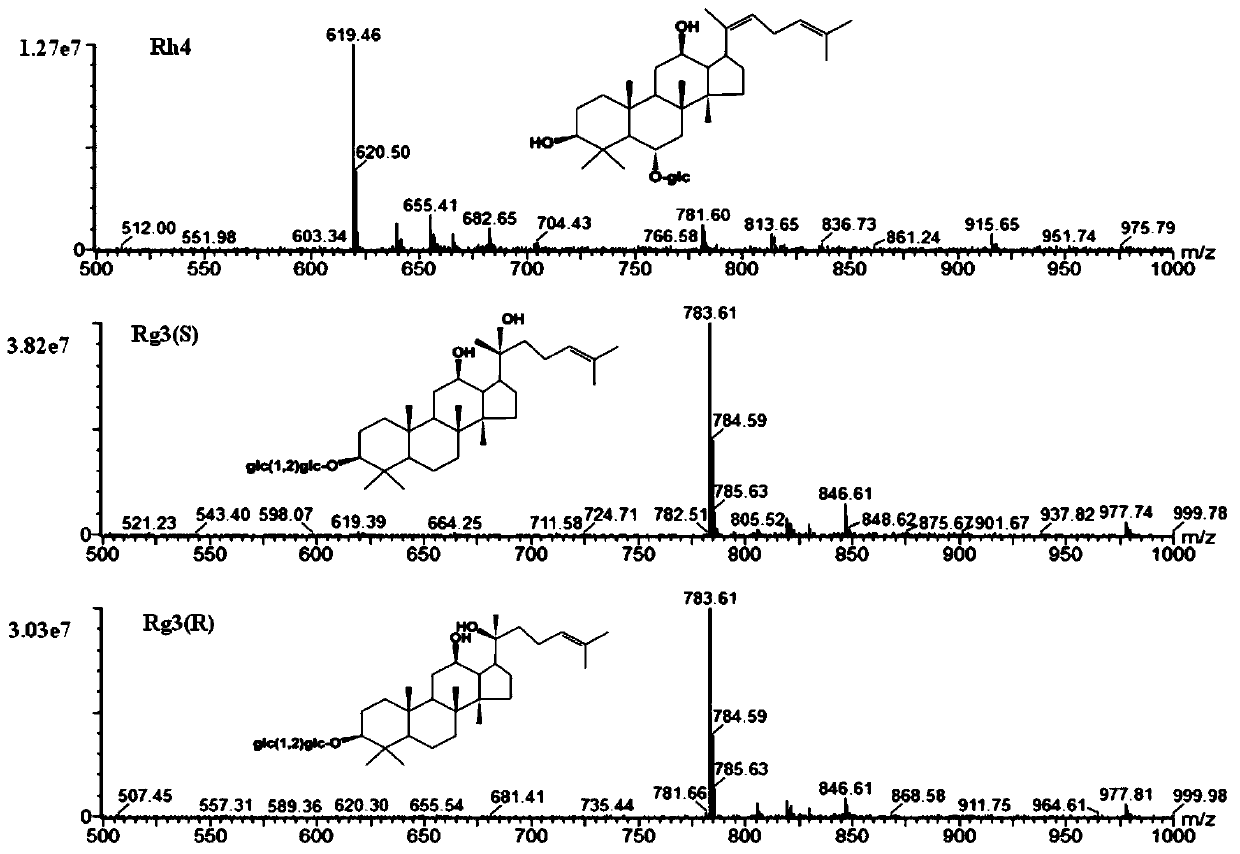Application of transformed type ginsenosides in preparation of hypolipidemic drugs
The technology of a hypolipidemic drug and ginsenoside, which is applied in the field of biomedicine, can solve the problems of single type and high incidence of side effects, and achieve the effects of small molecular weight, strong biological activity and strong fat solubility.
- Summary
- Abstract
- Description
- Claims
- Application Information
AI Technical Summary
Problems solved by technology
Method used
Image
Examples
Embodiment 1
[0065] In this example, a transformed ginsenoside is prepared, and its structure identification and content determination are carried out. The specific operations are as follows:
[0066] (1) Transformation of transformed ginsenosides
[0067] Panax ginseng stem and leaf saponins (80% total saponin content, UV detection) were purchased from Jilin Hongjiu Biotechnology Co., Ltd. Weigh 300 g of American ginseng stem and leaf saponins, dissolve it in 1.5 L of distilled water, and place it in a high-pressure steam sterilizer for heating at 130° C. for 3 h. Take out, cool and set aside.
[0068] (2) Enrichment of transformed ginsenosides
[0069] Load the converted saponin onto HP-20 macroporous resin, elute with 2 times the volume of water, 30%, 60%, 80%, and 95% (v / v) ethanol, and collect the 60% ethanol eluate , concentrated with a rotary evaporator at 45° C., and freeze-dried to obtain the transformed ginsenoside.
[0070] (3) Structure identification and content determinat...
Embodiment 2
[0088] In this example, the hamster, which is very similar to the cholesterol metabolism of the human body, was selected as the experimental animal model. In the study of lowering blood lipids, hamsters have more advantages than rats and mice. First of all, hamsters are similar to humans in that they are prone to high TC and high TG hyperemia caused by the increase of dietary cholesterol content, while rats and mice are less sensitive to the increase of dietary cholesterol than hamsters, and their blood TG content will also decrease. Secondly, the symptoms of hypercholesterolemia caused by increased dietary cholesterol in hamsters are similar to those in humans, and they all show elevated TC, LDL-C, and HDL-C. In rats and mice, with the increase of high cholesterol in the diet, the level of LDL-C in the blood increased, but the level of HDL-C decreased significantly. Thirdly, after ingesting a high-cholesterol diet, the proportion of HDL-C in TC in human and hamster blood is ...
Embodiment 3
[0140] The formation of macrophage-derived foam cells is an early change in the development and progression of atherosclerosis. In the pathophysiological process of atherosclerosis, macrophage-derived foam cells play a crucial role from the early fatty streak stage to the further plaque formation stage. Macrophages can phagocytose and absorb a large amount of modified low-density lipoproteins under the endothelium, and absorb cholesterol in cells more than excretion of cholesterol. At this time, macrophages become foam cells overloaded with lipids. In this example, Raw264.7 macrophages were induced into foam cells by ox-LDL, a foam model was established, the intracellular lipids were observed by Oil Red O staining, and the improvement effect of transformed ginsenosides on intracellular lipids was explored. The specific operation is as follows:
[0141] (1) Cell culture and induction of differentiation
[0142] RAW264.7 cells were statically cultured in DMEM medium containing...
PUM
 Login to View More
Login to View More Abstract
Description
Claims
Application Information
 Login to View More
Login to View More - R&D
- Intellectual Property
- Life Sciences
- Materials
- Tech Scout
- Unparalleled Data Quality
- Higher Quality Content
- 60% Fewer Hallucinations
Browse by: Latest US Patents, China's latest patents, Technical Efficacy Thesaurus, Application Domain, Technology Topic, Popular Technical Reports.
© 2025 PatSnap. All rights reserved.Legal|Privacy policy|Modern Slavery Act Transparency Statement|Sitemap|About US| Contact US: help@patsnap.com



